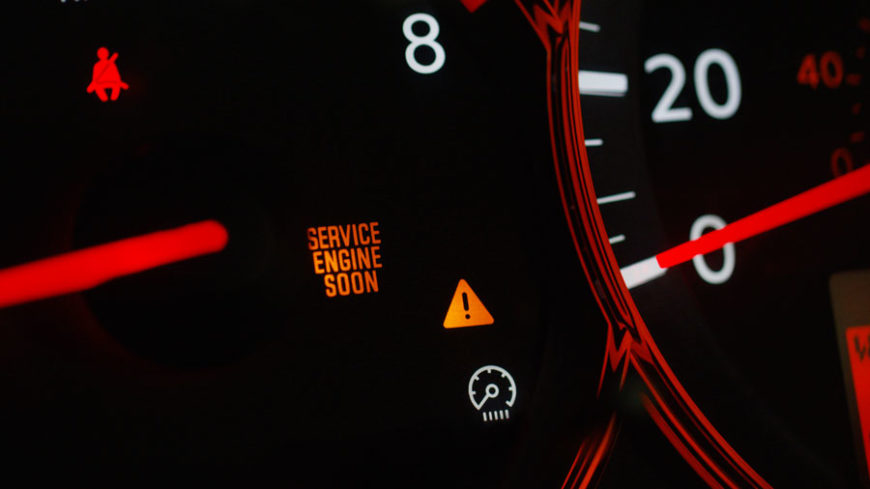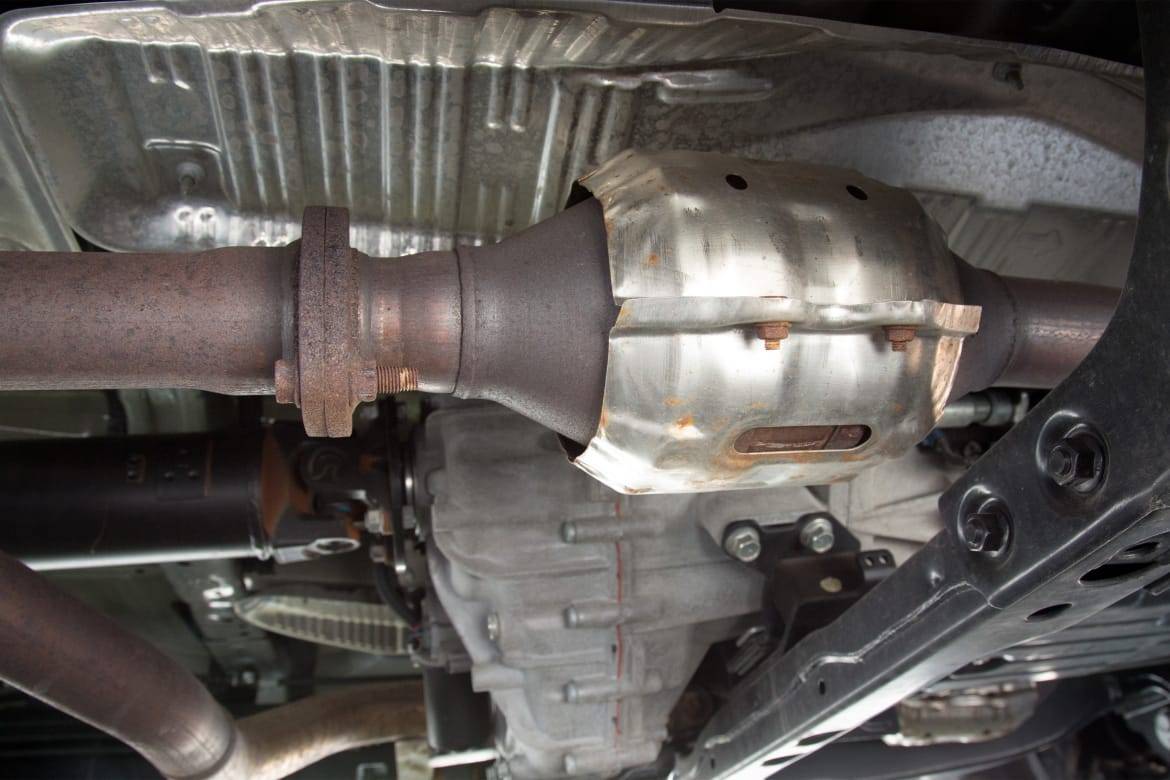Understanding Your Vehicle’s Check Emission System: Meaning, Causes & Fixes
Vehicles currently have complicated systems that incorporate computer modules, sensors, switches, and a variety of other electrical equipment, including the emissions system. An onboard diagnostics system, or OBDII, monitors activities and alerts you when there are problems that require your attention. It tests to ensure your emissions system is functioning properly, and if it isn’t, it illuminates a warning light.
Some vehicles have a “Check Emission System” light on the dashboard, while others have the Check Engine Light or another signal. It could signify a simple repair, such as adjusting the fuel cap, or it could indicate a much more expensive repair, such as replacing a catalytic converter for several hundred dollars.
As a vehicle owner, you should understand what it means when the Check Emission System warning light illuminates, what you can do about it, and how to maintain it.
Check Emission System Light

When a motor emits more pollutants than permitted by local rules, the check emission system light illuminates. If not remedied promptly, this inaccuracy may result in fines from local authorities.
The appearance of the Check Engine Light on your dashboard is the most visible symptom of a defective emission system. If you notice this light, it means that your vehicle’s onboard diagnostic system (OBD) has discovered an issue with the emission system.
Here are various indicators that there may be a problem with the emission system:
Gasoline Efficiency Decreased: A defective emission system can cause your car to consume more gasoline than usual. This results in lower fuel efficiency and higher fuel expenses.
Rough Idling or Stalling: An emission system failure might cause the engine to run poorly or stall while idling. It may cause engine misfires if not repaired.
Poor Performance: If your emission system is malfunctioning, your car may not accelerate effectively. You may also notice more exhaust fumes coming from the tailpipe than usual.
Fuel Smell: A strong fuel odor could indicate a leak in the exhaust system.
Must Read: Fuel Pressure Sensor: Understanding its Function and Importance
Components of an Emission Control System

There are several types of emission control systems, each with its own set of components. Among these components are:
Catalytic converter: This component uses a chemical reaction to transform toxic pollutants in exhaust gas into less damaging emissions.
The oxygen sensor: Measures the amount of oxygen in the exhaust gas.
Air Injection System: This system introduces fresh air into the exhaust system to assist in the combustion of any remaining pollutants before they are released into the atmosphere.
All of these parts work together to reduce hazardous emissions and improve vehicle environmental impact.
CAUSES OF THE “CHECK EMISSION SYSTEM” WARNING LIGHT
A variety of factors can cause the check emission system warning light to illuminate. The following are some of the most common causes:
Oxygen sensor failure

An oxygen sensor measures the amount of oxygen in the exhaust gas. It then communicates this information to the engine control module (ECM), which optimizes combustion and reduces emissions by adjusting the air/fuel mixture.
A faulty oxygen sensor can cause the engine to run too rich or lean, increasing emissions and lowering fuel efficiency. As a result, fuel prices will rise.
Catalytic converter failure

A catalytic converter initiates chemical reactions that convert hazardous exhaust gas contaminants into less hazardous emissions.
If this component fails, it might cause increased emissions and poor vehicle performance.
Evaporative Emission Control (EVAP) System Failure
The EVAP system catches and stores fuel vapors that escape from the fuel tank, preventing them from entering the atmosphere.
If this system fails, fuel vapors may escape into the atmosphere, generating higher emissions and associated safety issues.
Faulty Spark Plugs or Ignition System
Incomplete combustion can be caused by faulty spark plugs or defective ignition system. This can result in higher emissions, worse fuel efficiency, and potentially failure of other components of your pollution control system.
Ignoring or postponing repairs on any portion of your car can eventually result in higher repair expenses owing to increased wear and tear or full breakdowns of other components. Acting swiftly to address any automotive problems will help you save money.
- Leak in the exhaust manifold
- clogged air filter
The most common reason of the check emission system warning light is a defective oxygen sensor. The oxygen sensor is in charge of measuring the amount of oxygen in the exhaust. If it detects excessive oxygen levels, it will activate the check emission system warning light.
Another common source of this warning light is a defective catalytic converter. The catalytic converter is in charge of turning dangerous gases into harmless ones. If it fails to function properly, the check emission system warning light will illuminate.
An exhaust leak might potentially cause the check emission system warning light to illuminate. Exhaust leaks can be caused by a variety of factors, including a damaged exhaust pipe or loosened clamps.
Finally, a dirty air filter can illuminate the check emission system warning light. The air filter is in charge of keeping the air that enters the engine clean. If it’s dusty, it can block airflow and turn on the check emission system warning light.
Diagnosing The Problem
The Check Emission System warning light can be an inconvenient and concerning indicator if anything is amiss. However, detecting the problem can often be as simple as following a few steps.
Check the gas cap first, since a loose or damaged cap might cause the warning light to illuminate. According to the system, there appears to be a large vacuum leak in the fuel system, which is cause for concern. If the gas cap is secure and undamaged, a diagnostic tool can be used to pinpoint the source of the problem inside the emission control system. These tools can be purchased, or your local AutoZone may have one available through the Loan-a-Tool program.
Next, examine the various components of the emission system. Some of the crucial components to inspect for obvious damage or evidence of dysfunction include the oxygen sensor, catalytic converter, and evaporative emission system. Inspect the wiring for any evidence of corrosion or loose connections.
If the diagnostic tool does not reveal any specific problems, or if you are unsure what to check for, it is necessary to take your vehicle to a qualified repair. They can utilize more sophisticated diagnostic instruments and have the knowledge and expertise to accurately diagnose and fix your emission system.
Fixing The Problem
If you’ve identified the problem that’s causing the Check Emission System warning light to illuminate, you’ll need to take action to resolve it. Replace broken components such as the oxygen sensor, catalytic converter, or a vacuum hose, depending on the situation.
Leaking connections or faulty wiring may also need to be repaired or replaced to ensure the emission control system is functioning properly. In certain circumstances, clearing the warning signal may be as simple as replacing or adjusting the gas cap.
After making any necessary repairs, the warning light can be removed with a diagnostic tool or by unplugging the battery for a few minutes. However, keep in mind that simply turning off the warning light will not solve the underlying problem, so address the source of the problem first.
Preventive Actions
Some simple behaviors can help prevent the Check Emission System warning light from turning on. Here are some pointers to assist you avoid a problem:
Follow the maintenance schedule: Indicated in your vehicle’s owner’s manual on a regular basis. Tune-ups, oil changes, and air filter replacements on a regular basis can assist guarantee that your emission control system is working properly.
High-quality fuel can assist avoid damage to your vehicle’s emission control system and keep your engine operating effectively.
Check your gas cap: After refilling, make sure your gas cap is firmly fastened to prevent fuel vapor from escaping and to maintain proper pressure in the fuel system.
